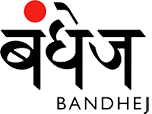
HANDCRAFTED, Sustainable Fashion
Currency

NATURAL DYE CENTRE
The Malkha initiative uses only natural dyes for all its cotton fabrics, and for a regular supply of natural dyed cotton yarn for its weavers, Malkha set up the Natural Dye Centre in 2004, under the guidance of natural dye experts Chandramauli and Jagada Rajappa, who have trained the staff in the process of natural dyeing. The centre is located in Hyderabad at the Rural Technology Park in the campus of the National Institute of Rural Development, and today, it is headed by the dye master, Salim Pasha, who has trained a group of women to do the washing and dyeing.
 |
 |
During my conversation with Salim, he mentioned that in 1989 he had come to work with Uzramma as her personal driver. There was a need for setting up a natural dye centre that would handle all of Malkha’s yarn dyeing requirements, and Salim came to know that they were in search of weavers and traditional dyers who would be willing to learn the craft as most had forgotten the old processes. After much coaxing, a few weavers from Chennuru showed interest in the project. Salim was also keen on learning a new skill and joined the group. After undergoing training, the weavers went back to their village and only one person continues with natural dyeing.
Salim took on the responsibility of setting up a dyeing unit and training women from the surrounding Rajendranagar area who had no previous experience of dyeing. His team of six women have now mastered the art of dyeing around 12 shades by using colourants such as indigo for blue, non-toxic alizarin for red, pomegranate peels for yellow, ratanjyot (jatropha) for grey, fermented iron and jaggery solution for black, pomegranate peel and fermented iron and jaggery solution for olive green, catechu for brown and manjistha (madder) for pinks.
Cotton yarn is sent by the Malkha office to the dye centre where it is first boiled in natural soap and soda ash solution to remove the inherent wax coat and impurities for better colour penetration. The hanks are dried, and then, the next day, dyed with myrobalan solution. They are dried and kept for a day or two before they are dipped in alum solution, which acts as a mordant for colour absorption and colour fastness. The hanks are again dried and left for a few days before they are dyed in the required shade. Only indigo does not need a mordant and the washed hanks are directly dyed in indigo vats. The centre has 40 indigo vats, and these are used in rotation for dyeing the yarn. Indigo blue is one of the most popular colours for Malkha fabrics, so normally, for two hours at the start of the day when water is boiled for the dye baths for other colours, they dye indigo which is a cold process. All other colours use the hot process where the dye bath solution is boiled before the hanks are soaked in the tub. For deeper colours, the hanks are dyed twice or thrice, depending on the shade required.
 |
 |
 |
The natural dyeing process is lengthy and tedious but the women seemed cheerful. They mentioned, We are happy with a safe and relaxed work environment and a regular monthly income. A new trainee starts at Rs. 6500 and the more accomplished dyers earn anywhere between Rs.8500 and Rs.12000 per month. They work from 9am to 5pm and during the hot summer months, they start early at 6am and work till 1pm. Salim mentioned that he prefers training women as ‘they have patience and are more focused and hard-working, while the men wander about and are not really interested in this work’.
The most interesting aspect of this unit is that all the people involved in the dyeing process are from non-artisanal backgrounds. They have learnt new skills and have become accomplished dyers. The work is laborious but the women mentioned, ‘once you get used to the work, it is quite easy and safe as we only use natural ingredients. We have built close friendships at the dye centre and are happy to spend a pleasant day, working together’.










